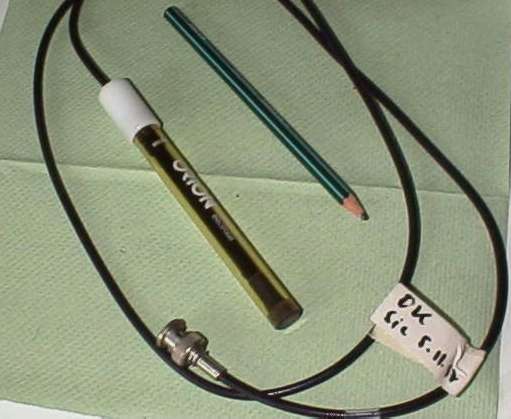| method | Fluoride in seawater is detected using a ion selective electrode |
 |
|
| electrode | ORION F-combination electrode 96-09. |
| method | ion selective electrode measurement. details |
| electrolyte | INGOLD #9811 3M KCl, AgCl saturated |
| standard stock | :Merck #19814, 1000 mg F/L |
| work standard | 100 ppm F by dilution with pure water |
| buffer |
TISAB III (Total
Ionic Strength Adjustment Buffer): |
| dilution solution | NaF-free artificial seawater |
| calibration standards | appropiate amounts of work standard are diluted with NaF-free artificial seawater. Add 10% TISAB (50 mL standard + 5 mL TISAB) (usually 0.5 and 5 ppm) |
| general conditions | Ionic strength should be similar in all standards and samples. pH should be in the range of pH 5 - pH 8. Seawater Mg concentration considerably affects analysis and has to be compensated for by using either seawater background standards or standard addition. If calibrated with seawater background standards, direct measurement may be performed. |
| buffer dose | 10% of sample volume |
| sample volume | We work with sample volumes as low as 1.5 mL (+ 150 ÁL TISAB) if necessary. ORION combination electrodes have a flat membrane and a concentric diaphragm such that solution level of a few mm is sufficient |
| storage and conditioning |
Store in 1000
ppm standard solution (without TISAB !) |
| tips + tricks |
This electrode
leaks electrolyte (on purpose) -> electrolyte level needs to
be controlled frequently:electrolyte level should be 2.5 cm above
solution level. The same setup may be used to measure fluoride in
toothpaste |